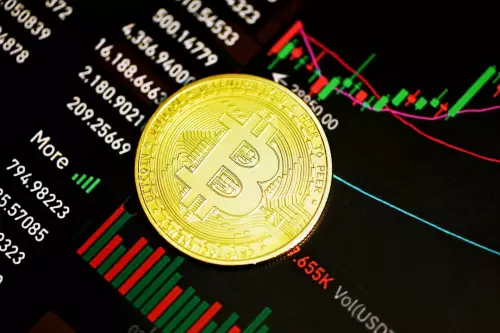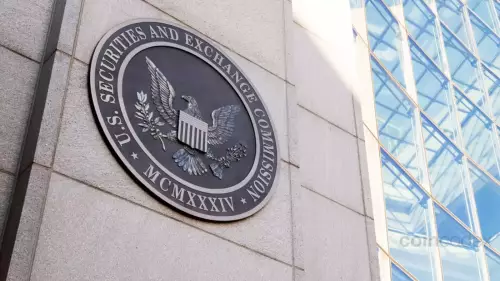 |
|
 |
|
 |
|
 |
|
 |
|
 |
|
 |
|
 |
|
 |
|
 |
|
 |
|
 |
|
 |
|
 |
|
 |
|
Cryptocurrency News Articles
Token Unlocks, DeFi, and Tokenomics: Navigating the Crypto Landscape
Sep 29, 2025 at 09:52 am
Explore the intricate dynamics of token unlocks, DeFi protocols, and tokenomics, and how they influence the cryptocurrency market.

Token Unlocks, DeFi, and Tokenomics: Navigating the Crypto Landscape
Token unlocks, DeFi, and tokenomics are buzzwords in the crypto space. Let's dive into how these elements interact and shape market trends.
Understanding Token Unlocks
Token unlocks refer to the scheduled release of locked cryptocurrency tokens into circulation. These unlocks can significantly impact a token's supply, influencing its price and market sentiment. Tokens are often locked initially to prevent early investors or team members from immediately selling, which stabilizes the project in its early days. However, when unlocked, the increased supply can lead to price fluctuations.
Historically, tokens like SUI and ARB have experienced price drops of 5% to 15% following unlock events. This volatility often stems from early investors cashing out or rebalancing their portfolios. However, projects with solid fundamentals can recover quickly.
Unexpected Recoveries After Unlocks
Not all token unlocks result in price crashes. Some projects have shown resilience. For instance, the PLUME Token rebounded after a major unlock by introducing a new staking program. Similarly, the SUI Token has remained stable during unlock events, likely due to a strong community treasury and strategic token release timing. Effective tokenomics and community engagement can mitigate the negative impacts of unlocks.
Strategies for Investors and Startups
Investors can prepare for token unlocks by tracking unlock schedules and market conditions. Risk management techniques, such as dollar-cost averaging, can cushion the impact of short-term price movements. Startups can implement strategies like:
- Phased Releases: Distribute tokens over time to minimize market shock.
- Community Incentives: Encourage long-term holding through staking or governance rewards.
- Transparent Communication: Keep the community informed about unlock schedules and project developments.
These strategies help manage liquidity shocks and price volatility associated with token unlocks.
CZ and the Hyperliquid Controversy
Recently, Binance founder Changpeng Zhao (CZ) has been at the center of controversy involving Hyperliquid (HYPE), a decentralized exchange. Speculation arose that CZ might be engineering a takedown of Hyperliquid, especially with the emergence of Aster, a project rumored to have CZ’s backing. Concerns mounted over HYPE’s upcoming token unlock, leading to discussions about a potential “death spiral.”
A study from Maelstrom Fund highlighted flaws in Hyperliquid’s tokenomics, suggesting a potential oversupply of $410 million monthly due to the token unlock. Some community members accused CZ of holding a significant amount of HYPE and potentially manipulating the market. However, not everyone agreed with this bearish narrative, arguing that profitable investors might reinvest in strong platforms like Hyperliquid.
Pendle: Revolutionizing DeFi Yields
Protocols like Pendle are transforming DeFi by tokenizing yield-bearing assets, allowing users to trade, lock in, or speculate on future yields. Pendle uses the SY (Standardized Yield) EIP-5115 token standard to split yield-bearing assets into Principal Tokens (PT) and Yield Tokens (YT).
- Principal Tokens (PT): Represent the principal value of the asset.
- Yield Tokens (YT): Represent the yield generated by the asset over time.
Pendle’s Automated Market Maker (AMM) facilitates efficient trading of PT and YT tokens, featuring flash swaps and concentrated liquidity pools. Use cases include fixed yield strategies, speculating on future yields, and shorting yields. Pendle’s governance is powered by the PENDLE token, which can be staked to obtain vePENDLE, granting governance rights, boosted yields, and revenue sharing.
WLFI: Strategic Token Repurchases and Burns
Tokens like WLFI are making headlines through strategic repurchases and burns. The World Liberty Financial project repurchased 6.04 million WLFI tokens and burned 7.89 million WLFI tokens. This proactive approach to tokenomics can influence WLFI price stability and investor sentiment. Token burns reduce the circulating supply, potentially driving up the price if demand remains steady or increases.
Final Thoughts
Navigating the world of token unlocks, DeFi, and tokenomics can feel like decoding ancient runes, right? But with a bit of insight and a dash of humor, we can demystify these concepts and maybe even make some savvy moves along the way. Keep your eyes peeled, your wits sharp, and who knows? You might just catch the next big wave. Happy trading, folks!
Disclaimer:info@kdj.com
The information provided is not trading advice. kdj.com does not assume any responsibility for any investments made based on the information provided in this article. Cryptocurrencies are highly volatile and it is highly recommended that you invest with caution after thorough research!
If you believe that the content used on this website infringes your copyright, please contact us immediately (info@kdj.com) and we will delete it promptly.






























































